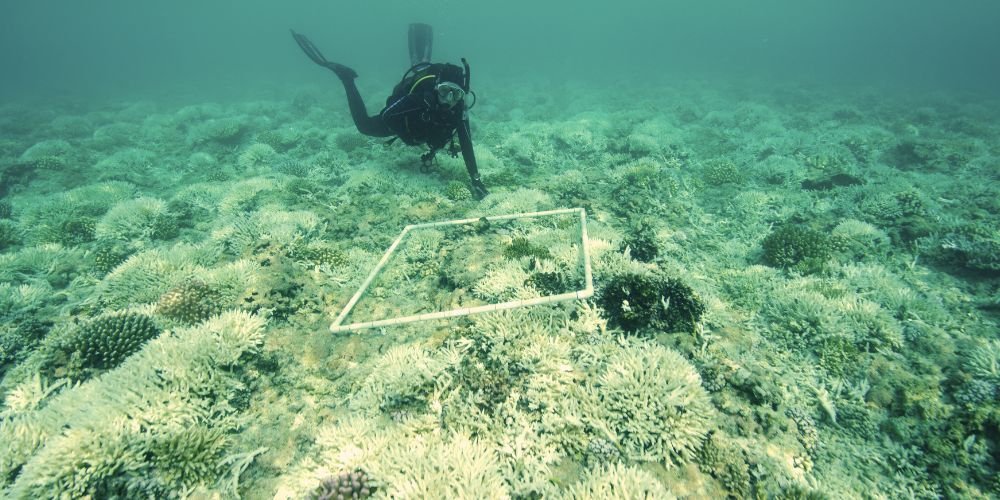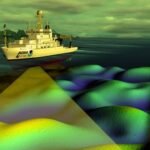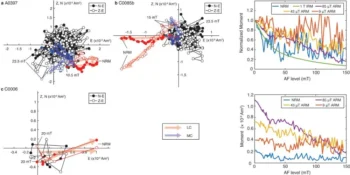In the world’s vast oceans lies a treasure trove of hidden knowledge waiting to be discovered: seafloor sediments. These silent archives, composed of layers of materials deposited over millennia, hold valuable clues about Earth’s history, climate change, and the evolution of life. In this article, we embark on a journey to explore the significance of seafloor sediments, the processes that shape them, and the invaluable insights they provide into our planet’s past and future.
Seafloor Sediments: Unearthed History Books
Seafloor sediments are the product of a continuous deposition, accumulation, and transformation of materials on the ocean floor. These materials, ranging from tiny mineral particles to the remains of ancient organisms, accumulate over geological timescales, creating a stratigraphic record that mirrors Earth’s history.
Seafloor sediments can be broadly classified into several categories, including:
- Terrigenous Sediments originate from land-based sources and are transported to the ocean by rivers, winds, and glaciers. They often contain minerals, clay, silt, and organic matter.
- Biogenic Sediments: Biogenic sediments consist of the remains of marine organisms, such as shells, skeletons, and microorganisms. Over time, these organic materials accumulate on the seafloor, creating layers rich in calcium carbonate (chalk) or silica (diatoms).
- Hydrogenous Sediments: Hydrogenous sediments form from chemical reactions in seawater. They include minerals like manganese nodules, phosphorite, and authigenic clays. These minerals precipitate out of seawater and settle on the seafloor.
- Cosmogenous Sediments: Cosmogenous sediments are composed of extraterrestrial material, such as meteorite dust and micrometeorites. They provide insights into the history of cosmic events and their impact on Earth.
Recording Earth’s History
Seafloor sediments serve as a remarkable archive of Earth’s history, documenting changes in climate, sea level, and the evolution of life over geological epochs.
Climate History
The composition and characteristics of seafloor sediments offer invaluable information about past climates. Variations in sediment layers can indicate shifts in temperature, sea ice extent, and the prevalence of climate events like El Niño.
For example, analyzing oxygen isotopes in the shells of marine microorganisms preserved in sediment cores provides a record of ancient sea surface temperatures. Additionally, pollen and organic matter in sediments can reveal changes in terrestrial vegetation, further aiding in reconstructing past climates.
Sea Level Changes
Seafloor sediments also bear witness to changes in sea level. Sediment layers deposited at different times can provide data on sea-level fluctuations over geological time scales. This information is critical for understanding how Earth’s ice sheets have waxed and waned in response to climate change.
Evolutionary Insights
The remains of marine organisms in seafloor sediments offer a window into the evolution of life on Earth. Fossilized diatoms, for instance, can reveal shifts in species diversity and adaptations to changing environments. These insights contribute to understanding how marine ecosystems have evolved and adapted to various ecological pressures.
Unraveling Earth’s Processes
The study of seafloor sediments also illuminates Earth’s geological and geochemical processes, including plate tectonics, mineral formation, and the carbon cycle.
Tectonic Activity
Seafloor sediments often record evidence of tectonic activity, such as volcanic ash layers and turbidites (sedimentary deposits caused by underwater landslides). These features provide insights into the geological history of ocean basins and the movement of Earth’s crustal plates.
Carbon Cycle and Ocean Chemistry
The carbon cycle plays a pivotal role in regulating Earth’s climate. Seafloor sediments capture organic carbon from marine life, which, when buried and preserved, becomes a long-term carbon sink. Understanding this process is vital for assessing the ocean’s carbon balance and its impact on climate change.
Challenges and Future Exploration
Despite their scientific importance, studying seafloor sediments presents significant challenges. Accessing these deep-sea archives requires specialized equipment and expertise, and the harsh conditions of the ocean floor make research both technically demanding and costly.
Technological Advances
Advancements in marine technology, such as remotely operated vehicles (ROVs) and autonomous underwater vehicles (AUVs), have greatly enhanced our ability to explore and sample seafloor sediments. These tools allow researchers to collect sediment cores and conduct precise in-situ analyses.
International Collaboration
International collaborations, including deep-sea drilling programs like the International Ocean Discovery Program (IODP), enable scientists worldwide to access seafloor sediments and conduct research on a global scale.
Conclusion
Seafloor sediments are the silent witnesses to Earth’s history, offering invaluable insights into our planet’s past and future. They hold the key to understanding climate change, sea level fluctuations, the evolution of life, and geological processes that shape our world.
As technology advances and international cooperation continues flourishing, we can expect even more revelations from these submerged archives. The study of seafloor sediments enriches our understanding of Earth’s history and underscores the importance of preserving these valuable records for future generations. It is a testament to human curiosity and the quest to unravel the mysteries of our planet’s past, hidden beneath the waves.












